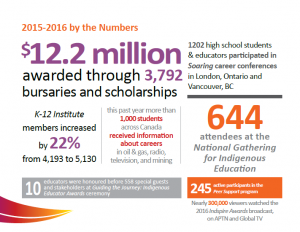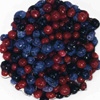The more I research into art, technology and indigeneity, the more intrigued I am with the topic. There are many layers to the topic and it is constantly evolving as culture is not static and there is not one set definition of what culture is. In addition, technology continues to evolve so more layers become added including commodification and differing world views on this.
http://rac.sagepub.com.ezproxy.library.ubc.ca/content/35/4/107
In the journal article, “Aboriginal theater: does ’sold out’ mean ’selling out’? “ The author discusses the disparity between Western Civilizations’ view of theater and the aboriginal point of view which encompasses a reflecting of spiritual truth as they see it. He highlights the complexities of ancient, traditional Aboriginal art forms and finds that the performing arts have been portrayed as primitive ritual lacking in the sophistication and complexity of contemporary western civilization. He speaks to the ethnocentric and naïve view that western thought purports and proposes that these art forms may be difficult to interpret using western mode of thought.
http://ariel.journalhosting.ucalgary.ca/ariel/index.php/ariel/article/viewFile/3888/3825
In the journal article “From Colonialism to Multiculturalism? Totem Poles, Tourism and National identity in Vancouver’s Stanley Park”, the author reflects about the symbol of the totem pole and questions whose culture is represented, displayed and consumed. She questions whether or not they adequately capture the complicated and diverse histories and experiences of first nations people in the province of BC. She also discusses the use of totem poles as a statement of Canadian heritage and questions the Canadian Government’s use of them for their economic and cultural value. She writes further that the displays run the risk of minimizing the histories and legacies of aboriginal people within our nation.
http://mcu.sagepub.com.ezproxy.library.ubc.ca/content/9/2/141.full.pdf+html
In the article, “Authentic Inuit Art: Creation and Exclusion in the Canadian North”, the author discusses how Modern Inuit commercial arts grew out of the desires of multiple non-Inuit agencies and persons. He also discusses how these outside influences worked to create new art forms which were means of carrying out the will of these competing persons in a complex competition to control social and cultural relationships. These were appropriated by the Inuit and this new art gave them new strength to establish new economic, social and political institutions. In all, the article examines the historical support and shaping of Canadian Inuit art in the 20th century, and the consequences of outside influences.
http://www.emeraldinsight.com.ezproxy.library.ubc.ca/doi/full/10.1108/20441261111171684
In In the article, “Indigenous culture: both malleable and valuable”, the author speaks to Ideological tensions that arise with the effort to balance the preservation of cultural integrity with the selling of marketable wares. She proposes further interdisciplinary research to develop an understanding that supports the long‐term sustainability of indigenous communities. She finds that existing discourse is currently dominated by non‐indigenous voices and Western tourism motivations, which need amelioration to better support the community‐based approach.
http://www-tandfonline-com.ezproxy.library.ubc.ca/doi/full/10.1080/09528820412331318578?scroll=top&needAccess=true
In the article, “The Artifice of Culture, Contemporary Indigenous Art and the Work of Peter Robinson”, the author discusses the huge effect computing, Internet, and televisual technologies have had on the conditions of the production, reproduction, circulation, and consumption of cultural imagery. These technologies are fueling an economy and the commodification of art as culture. Indigenous and non‐Indigenous perspectives on commodification are likely to provide different views. The article examines the representation of contemporary, ‘non‐traditional’ Indigenous art and the definition of cultural property and identity.



